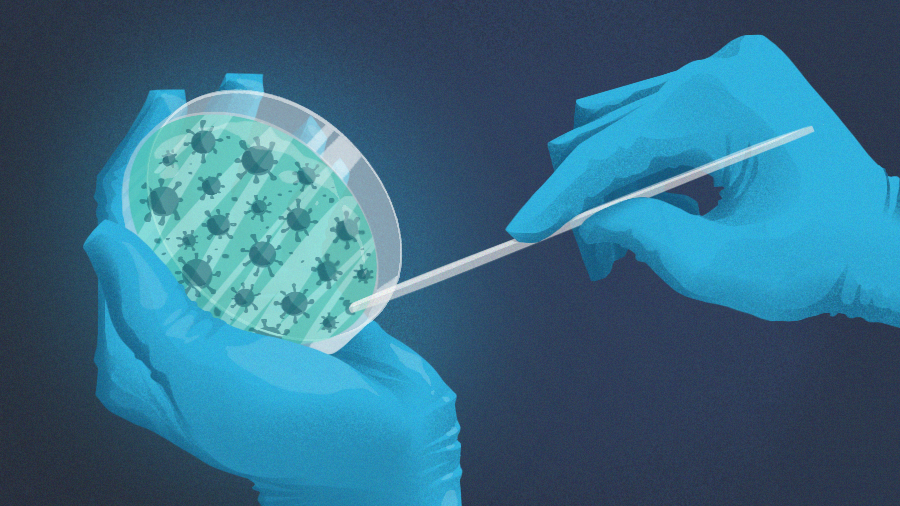Innovators need to channel our new, healthy fear of infection toward a productive examination—and, if necessary, disruption—of the status quo. Like the diseases we chalked up to miasma and the infections that pushed Florence Nightingale to reform nursing, COVID-19 can help us take another leap forward in public hygiene innovation.
Subscribe to the Crunchbase Daily
We’re all amateur epidemiologists now, grappling with the next outbreak, the next wave, the next variant of COVID-19, the next corporate policy rolled out to mitigate risk. But it’s worth remembering that it wasn’t all that long ago that even our top scientists had no real understanding of the spread of germs, bacteria and viruses.
For centuries after the invention of the microscope, leading health experts still believed that diseases were spread by miasma—poisonous fogs emitted by dead bodies, rotting vegetation and sewage. It wasn’t until the second half of the 1800s that we finally understood how transmission took place through contaminated water and surfaces.
Armed with the science of germ theory, doctors and nurses began paying close attention to hand-washing and the use of chemical cleaners to sterilize their tools and workspaces. It was the beginning of a new age of hygiene in health care.
The coronavirus may prove to be another turning point in the long battle against infection. We’re almost through the worst of it now, and we’ve learned that it spreads mostly through the air. But the pandemic has led most of us to take stock of our relationship with microbes and hygiene. That gives us a chance to build it all back better — especially in our hospitals, clinics and nursing-care homes, where experts believe exposure to drug-resistant infections has risen during the chaos of the pandemic.
These health care settings are meant to be safe spaces for the vulnerable. We should channel our newfound fear of infection and use it to usher in another leap forward in how we safeguard them.

To be clear, hospitals have always been places to go when sick, and they have also carried some risk of making patients worse. “The very first requirement in a hospital is that it should do the sick no harm,” lamented Nightingale, who worked tirelessly to reduce infection death rates and transform the practice of nursing in Britain’s squalid Crimean War-era military hospitals.
Things are miles better today than they were in her day, but the infectious pathogens and superbugs found in modern hospitals are stubbornly resistant to medicines and cleaners. Patients arrive at the hospital already compromised, making them prime targets for these pathogens, which can be spread whenever a staff member or patient touches an infected surface—a medical instrument, yes, but also such seemingly innocuous items as a bed rail, a sink faucet or even a computer mouse.
As a patient, if you’re admitted to a bed where the previous patient had an infection, you are now six times more likely to acquire the same infection, a 2018 study found. And on any given day, 1 in 31 hospital patients has at least one health care-associated infection, according to the U.S. Centers for Disease Control and Prevention.
In a cruel irony, COVID-19 appears to have worsened the problems. Data is hard to track with changes to screening protocols, but there have been outbreaks in hospitals and nursing homes in several countries, including the United States. Superbugs are thriving in overwhelmed facilities amid changes in procedures, staffing and the availability of cleaning supplies, and doctors warn that facilities must renew their efforts in order to prevent more outbreaks.
If they don’t, it will cost us all—in our health and in our wallets. A 2014 study found that 2 million Americans a year acquire infections while in the hospital or receiving care, with 90,000 deaths. The study assessed the direct medical cost as up to $45 billion, which doesn’t include the personal and broader economic damage.
So while the end of the COVID-19 pandemic may or may not finally be in sight, we will vanquish it only to find ourselves facing a range of familiar foes—the viral diseases, infections and superbugs we were already struggling to contain.
If anything, the past year has been a wake-up call. The pandemic is making us reevaluate how we build and maintain the infrastructure of our daily lives. Remote work, transit and crowded public spaces may be pieces of the puzzle, but we absolutely require a thorough reexamination and reinvigoration of our cleaning practices in hospitals, doctor’s offices and nursing-care homes.
Adam Steinhoff is a health technology expert and the co-founder and CEO of Solaris.
Illustration: Dom Guzman

Stay up to date with recent funding rounds, acquisitions, and more with the Crunchbase Daily.




![Illustration of agentive AI brain - North America - Quarterly. [Dom Guzman]](https://news.crunchbase.com/wp-content/uploads/Agentive_AI_n-america-470x352.jpg)
![Illustration of a guy watering plants with a blocked hose - Global [Dom Guzman]](https://news.crunchbase.com/wp-content/uploads/quarterly-global-3-300x168.jpg)
67.1K Followers